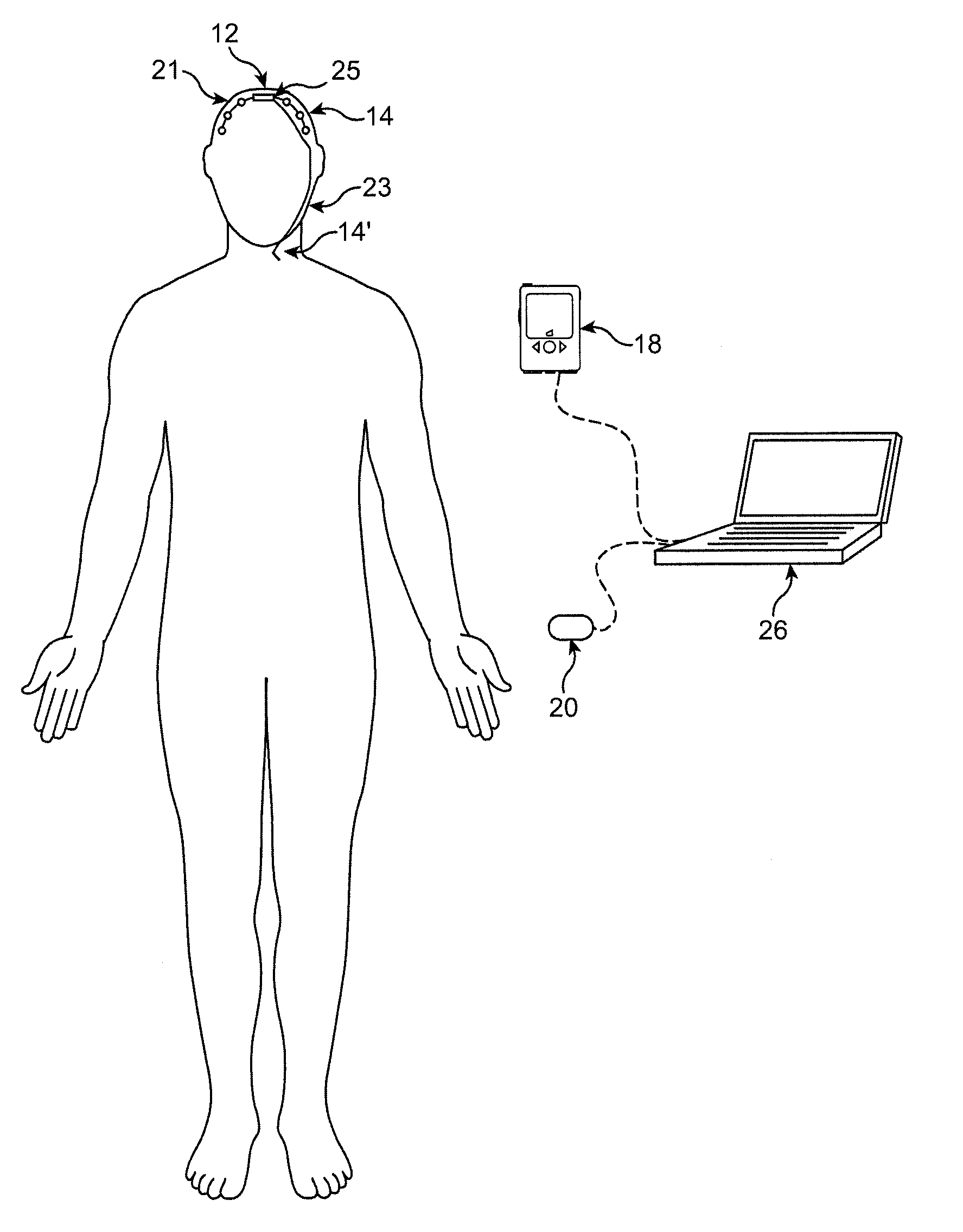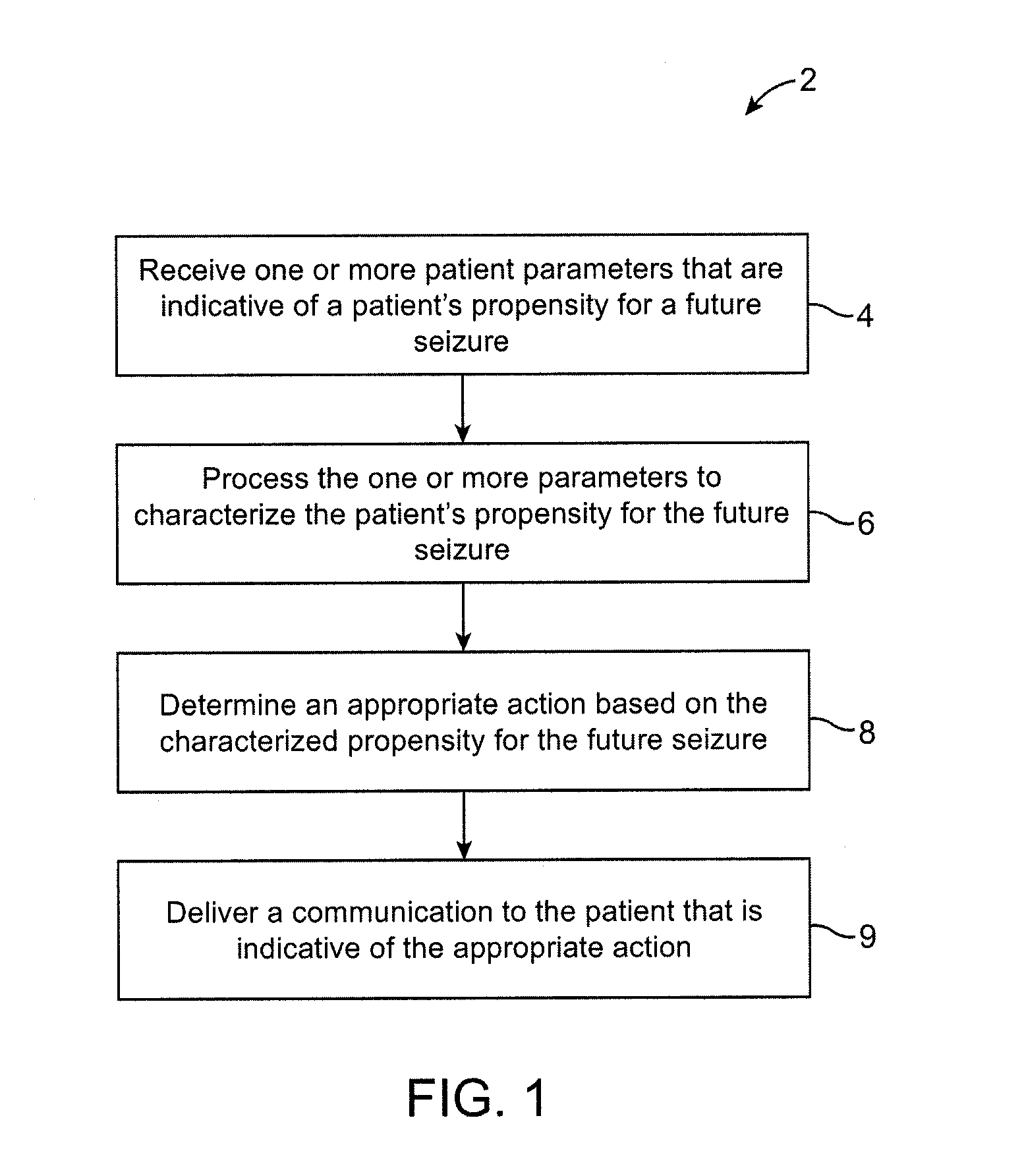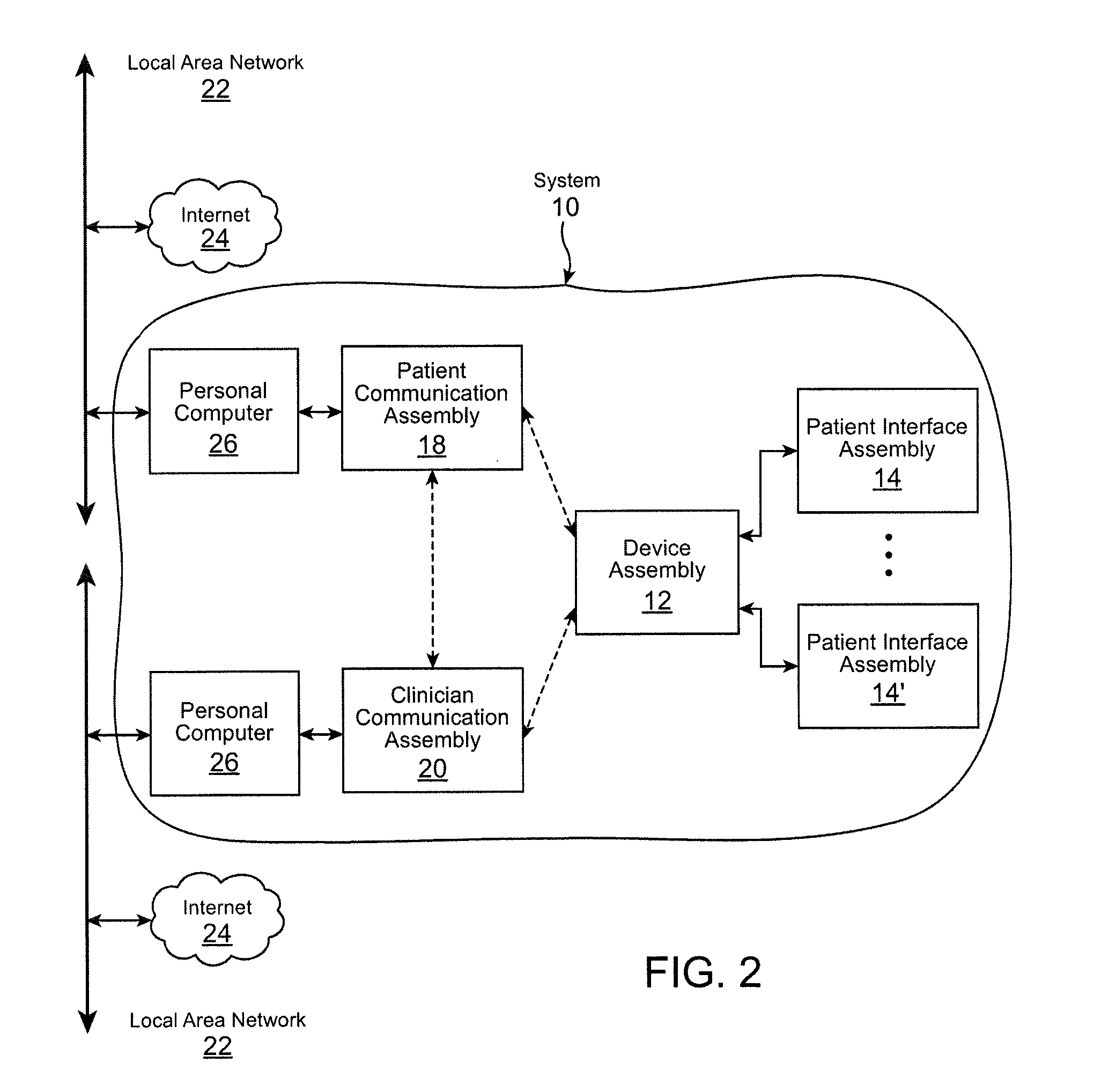Methods and systems for administering an appropriate pharmacological treatment to a patient for managing epilepsy and other neurological disorders
a technology for epilepsy and other neurological disorders, applied in the field of methods, can solve the problems of sudden, involuntary, disruptive, and often destructive seizure, physical harm to the body, complete loss of consciousness, etc., to prevent the occurrence of seizure, reduce the frequency or likelihood of seizure, and reduce the magnitude or duration of seizure.
- Summary
- Abstract
- Description
- Claims
- Application Information
AI Technical Summary
Benefits of technology
Problems solved by technology
Method used
Image
Examples
example
[0264] TABLE 4 shows application of Eq. 11 and 13 to determine the dosage of a benzodiazepine.
TABLE 4Sample Dosing Regimen for Intranasal MidazolamScaleTROTCODRODCO(DCO / DRO)5 minutes10 minutes0.25mg / kg0.174mg / kg0.6985 minutes20 minutes0.25mg / kg0.107mg / kg0.4295 minutes30 minutes0.25mg / kg0.087mg / kg0.3485 minutes45 minutes0.25mg / kg0.076mg / / kg0.3045 minutes60 minutes0.25mg / kg0.073mg / kg0.2935 minutes60 minutes0.20mg / kg0.059mg / kg0.2935 minutes60 minutes0.50mg0.146mg0.293
[0265] For the above, a KA of 2.46 hr−1, and a tE1 / 2 of 3.1 hours. “Scale” shows the scale by which the dose can be reduced using the preventative acute dosing (DCO) provided by the present invention, as compared to the dosing used to terminate a seizure after the seizure has begun (DRO). One can see how the scale decreases the amount of drug needed as the time to seizure increases from 10 minutes to 60 minutes. It should be appreciated however, that with a longer time window to seizure, a greater reduction in dosage may...
examples
[0310] In some embodiments, administration of compounds of the present invention may be intermittent, for example administration once every two days, every three days, every five days, once a week, once or twice a month, and the like. In some embodiments, the amount, forms, and / or amounts of the different forms may be varied at different times of administration based on the neural state and / or prediction of the seizure.
[0311] The following description provides one example of a predictive algorithm that may be used to monitor the patient's neural state to monitor the effect of acute dosages of AEDs. As can be appreciated any of the aforementioned predictive algorithms may be used by the present invention to predict the onset of a seizure, and the present invention is not limited to the following example.
[0312] Chronic dosages of anti-epileptic drugs (AEDs) have been shown to improve seizure control in patients with partial epilepsy. Previous studies have indicated that the developm...
PUM
| Property | Measurement | Unit |
|---|---|---|
| Fraction | aaaaa | aaaaa |
| Fraction | aaaaa | aaaaa |
| Fraction | aaaaa | aaaaa |
Abstract
Description
Claims
Application Information
 Login to View More
Login to View More - R&D
- Intellectual Property
- Life Sciences
- Materials
- Tech Scout
- Unparalleled Data Quality
- Higher Quality Content
- 60% Fewer Hallucinations
Browse by: Latest US Patents, China's latest patents, Technical Efficacy Thesaurus, Application Domain, Technology Topic, Popular Technical Reports.
© 2025 PatSnap. All rights reserved.Legal|Privacy policy|Modern Slavery Act Transparency Statement|Sitemap|About US| Contact US: help@patsnap.com



